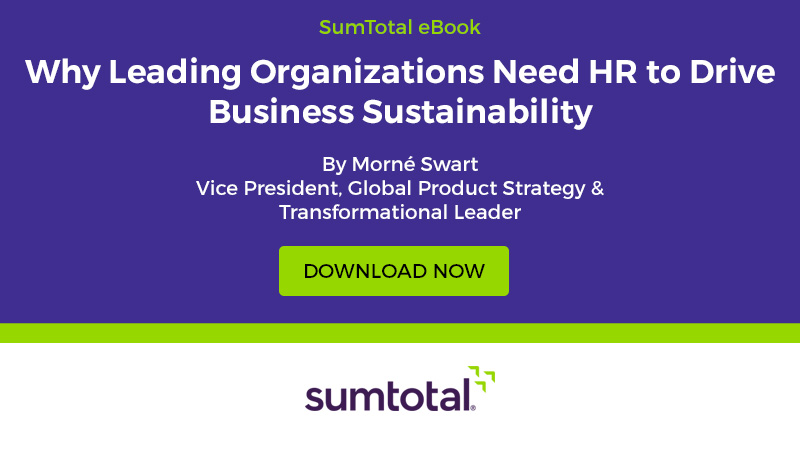Let HR Drive Agility in Your Workforce

In the last 15 years, almost a third of corporations on the Dow Jones Industrial Average were replaced. Failure to adapt was one of the critical contributing factors to their demise. The frenetic pace of change is a massive concern for all enterprises, and how your organization handles this challenge will determine whether or not your business is sustainable.
Central to any organization’s business sustainability is implementing a talent strategy that enables growth in an ever-shifting workplace environment. Business leaders already know that many former industry giants are failing in this rapidly changing marketplace. The key to reducing vulnerability and becoming “fail-proof” is through retention and maximization of talent.
In other words, HR’s fundamental role is now critically aligned with business strategy. A recent Market Cap survey of 1,600 global organizations found that the percent of C-Suite members who discuss talent management related strategy and issues with investors has increased to nearly 70%.
Simply recognizing HR’s critical role is not sufficient. HR must be allowed to build a culture where individuals are trained and ready to tackle change. One that empowers employees to take ownership of their development so they can acquire new skills sets. It also needs to provide employees with limitless career opportunities.
HR must be allowed to:
#1 Make talent a top priority
Leading organizations focused on business sustainability must hire the right talent with an intuitive and customizable requisition process; screening, interview and application tools; and the ability to search and manage pools of external and internal employee candidates. It’s not about “headcount,” it’s about the right heads, sitting in the right chairs. As any experienced HR leader knows, that requires tremendous organization and a frictionless recruitment process.
#2 Promote from within
We know it is less expensive to upskill an existing employee than to find someone new, and employees are making it clear that they want employers who offer career opportunities. Watch Derek Blake, Sr. Director of Global Learning at PSAV, explain how they are deploying career functionality to plan their future workforce.
#3 Develop the skills your organization really needs
Before embarking on any learning initiative, it is essential first to understand the skills needed both now and the skills required to take your organization into the future. Complete an inventory of the scope of the skills your employees currently possess - this includes those skills they have but do not utilize in their current capacity - and share the findings with the key stakeholders to develop an accurate picture of the necessary skills.
No one understands people like HR
Morné Swart, Vice President of Global Product Strategy & Transformational Leader, SumTotal, recently published Why Leading Organizations Need HR to Drive Business Sustainability. This free eBook provides a game plan to:
- Position HR at the helm of business sustainability by being an expert in the boardroom
- Explain why digital transformation has changed talent management and what it means for your organization long-term
- Gain more in-depth knowledge of why innovation, automation, and adaptation are the keys to a robust talent management and business sustainability strategy
- Make talent development the top priority for decision-makers within your organization
- Empower your people to take control of their careers and fully engage with their roles
